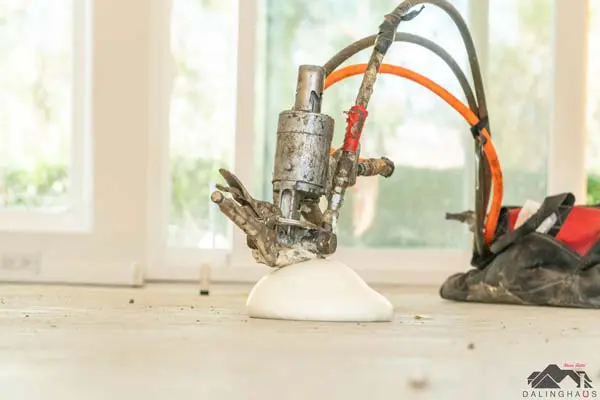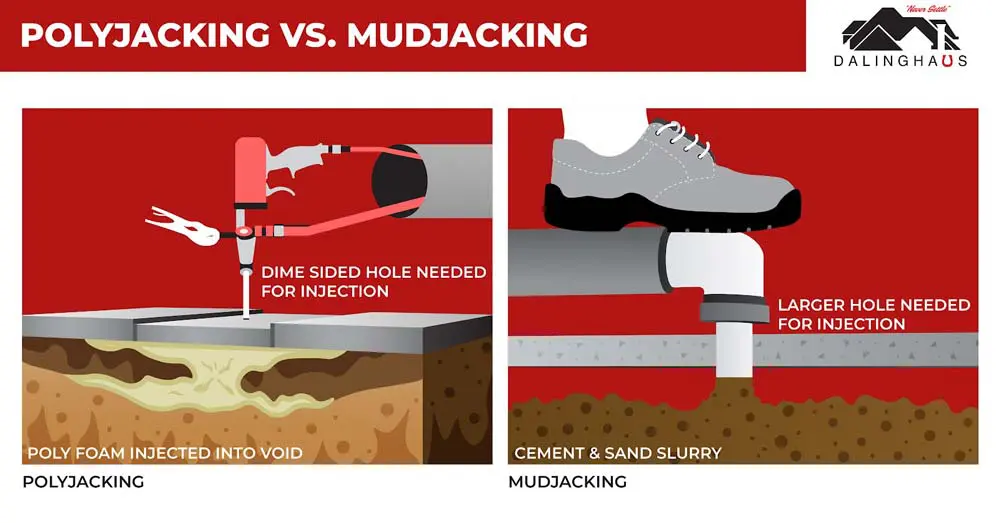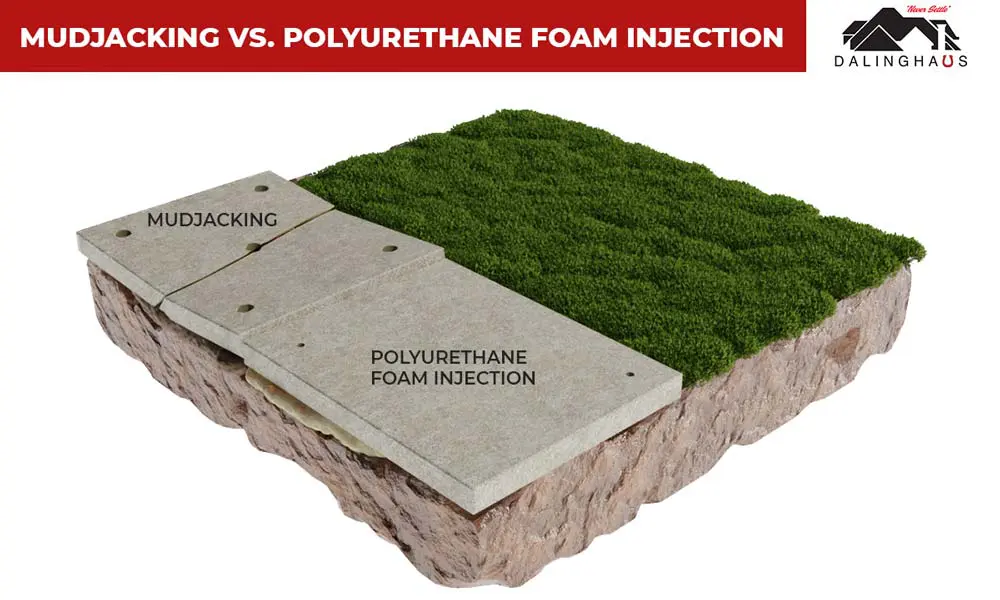Looking for information about lifting concrete with foam? If so, don’t hit that back button because you’ve landed on the right page. In this article, we’ll review why concrete slabs, like sidewalks, driveways, and patios, become uneven, how they can be lifted and leveled using foam, why using foam to lift an uneven concrete slab is better than mudjacking, and more.
Why Do Concrete Slabs Such as Sidewalks and Driveways Become Uneven?
Over time, sidewalks, driveways, and other concrete surfaces can become uneven, which can present a safety hazard and detract from the overall appearance of a property. Concrete slabs become uneven for various reasons, including the following:
- Improper installation – If the ground beneath the concrete wasn’t adequately compacted before pouring, the resulting slab will likely become uneven over time. Additionally, if insufficient reinforcement or a low-quality concrete mix was used during installation, the slab may not be able to withstand the weight and pressure of regular use, causing it to become uneven or crack.
- Expansive soil – Expansive soil contains a lot of clay, which expands and contracts due to changes in moisture levels. This can, over time, cause the concrete slab to become uneven.
- Erosion-prone soil – Some types of soil are prone to erosion. As the ground under the slab washes away, voids form. If the slab sinks into the voids, it will become uneven.
- Invasive tree roots – Tree roots can invade and exert pressure on the slab, causing it to become uneven. We’ve all seen examples of this.
- Heavy usage – Over time, heavy vehicles and foot traffic can cause the concrete to settle, creating an uneven surface. This is very common to see in warehouses at control joints from continuous forklift traffic.
What Is Concrete Leveling Foam?

Concrete leveling foam, also known as polyurethane foam or slab jacking foam, is a lightweight material used to raise and level sunken concrete. It’s a two-part system of chemicals that, when mixed, creates an expanding foam that can lift concrete slabs back to their original position. This process is more cost-effective and efficient than traditional methods like replacing the entire slab or mudjacking, which involves injecting a slurry of cement and other materials into the soil to lift the slab. We’ll talk more about mudjacking in just a bit.
How uneven slabs are leveled using foam
The general process for lifting an uneven concrete slab using foam is as follows:
- Small, dime-sized holes are drilled into the affected slab.
- The concrete lifting foam is injected under the slab via the holes. The foam immediately begins to expand, filling voids and lifting the slab.
- When the lifting is complete, the holes are matched with a compound that closely matches the color of the slab.
- Fifteen minutes after the repair is complete, the slab is ready for use again.
Concrete leveling foam can be used for various applications, including sidewalks, driveways, patios, pool decks, and garage floors.
For more information, see Uneven Concrete Driveway Repair Using Polyjacking.
What Is Mudjacking?
Mudjacking is the old-school way of lifting and leveling an uneven concrete slab. It involves injecting a cement slurry mixture (water, cement, soil, and other additives) beneath the concrete slab that needs to be raised instead of concrete leveling foam. As with the foam, the mudjacking slurry fills the voids underneath the slab and provides the necessary support for it to be lifted and leveled.

While mudjacking is still used today to level uneven concrete slabs, it isn’t as popular as before. Today, most uneven concrete slabs are leveled using concrete lifting foam.
Why Concrete Leveling Foam Is Better Than Mudjacking for Leveling Uneven Slabs
Today, concrete leveling via foam is the most common method for lifting and leveling an uneven slab for various reasons, including the following:
- Leveling with foam is quicker than mudjacking – One of the primary benefits of concrete leveling foam is speed. Most jobs can be done in just a matter of hours. This makes it a more efficient and convenient solution for property owners who want to get the job done quickly. In contrast, the cement slurry used in mudjacking takes time to cure, which means there’s a certain amount of downtime.
- Foam isn’t subject to erosion – Another advantage of foam is that it won’t break down over time. As the name implies, mud is a mixture of water and soil. This means the mudjacking slurry, even though it contains cement, is susceptible to erosion. Concrete leveling foam is made of a special polymer blend that won’t break down or deteriorate over time. This makes it a more durable and reliable solution.
- The holes are smaller – The holes used to inject the concrete leveling foam are smaller than those required for mudjacking. This means the repair is less visible.
- Concrete leveling foam is very lightweight – This means it won’t add extra weight to soil, which is already having trouble supporting the slab.
- Concrete leveling foam is waterproof – Even if water collects in the area where the slab is, the foam won’t wash away as it’s specially formulated to resist moisture. This makes it a more reliable and sustainable solution overall.

What About Digging Up the Uneven Slab and Replacing It?
Replacing an uneven concrete slab means digging up the old slab and pouring a new one. This time-consuming, invasive, and costly process requires more labor and material. After the new slab has been poured, it will need time to dry and harden. During this time, you won’t be able to use the slab. In contrast, leveling using foam can usually be completed in just a few hours, and then the slab is ready for use again.
How Much Does Concrete Leveling Cost?
The average cost of concrete leveling varies depending on several factors, such as the size of the affected area, geographical location, accessibility, level of damage, and the method used to level the slab. Generally, the cost per square foot ranges from $5 to $10, meaning a minor repair could cost around $1500, while an extensive repair could cost more than $20,000.
If you have a question about lifting concrete with foam, contact us today to schedule an evaluation and receive a repair estimate. We serve Southern California, Arizona, and Nevada.






